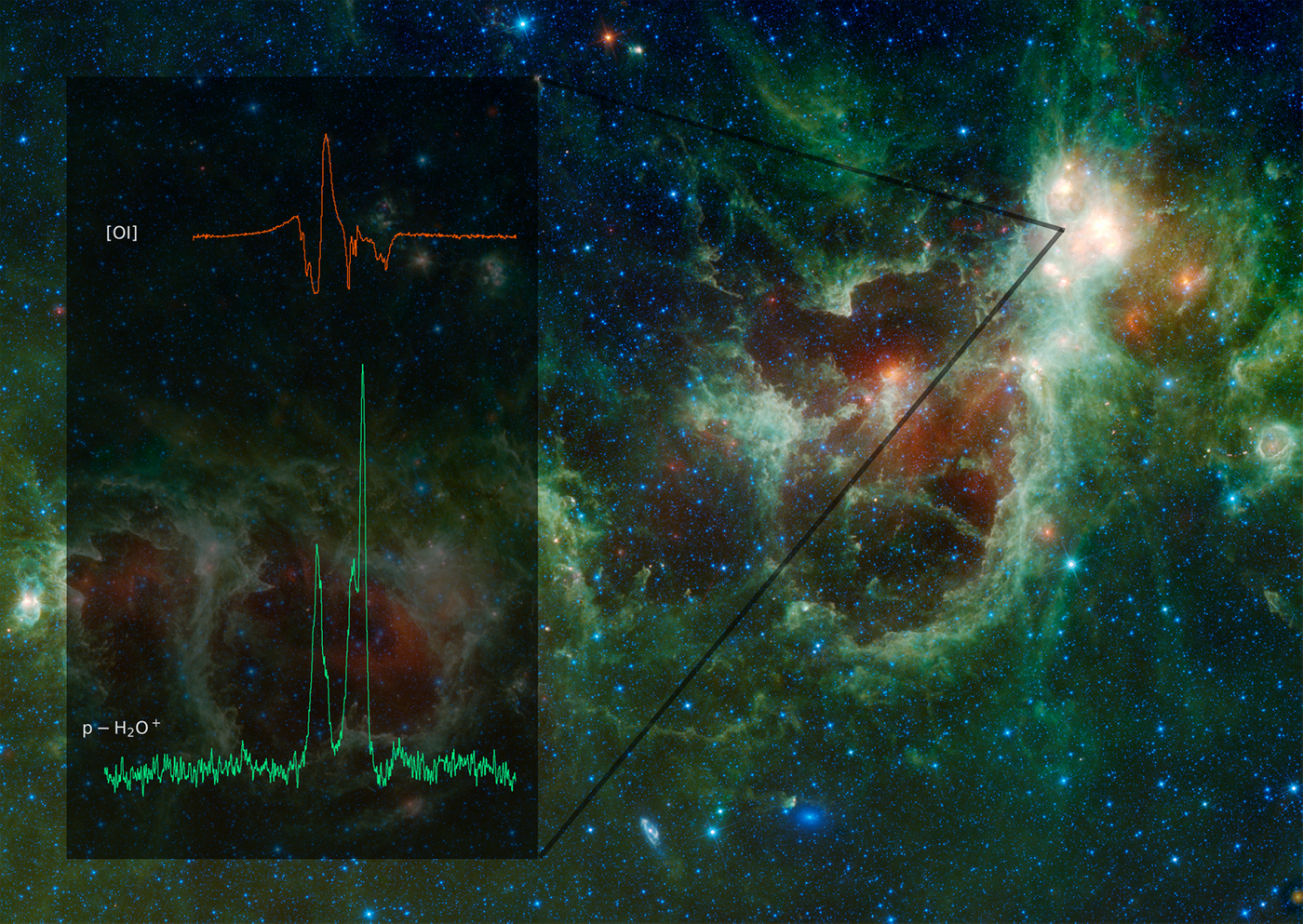Telescope on Plane to Study Evolution of Molecules in the Milky Way
Hydrides in the Galaxy (HyGAL) is a project whose goal is to characterize the interstellar medium in the Milky Way in order to better understand its evolution. The team will investigate six types of hydrides – molecules or molecular ions where one or more hydrogen atoms are bound to a heavier atom through shared electron pairs – to better understand the lifecycle of molecular material in our galaxy. Arshia Jacob, astronomer at Johns Hopkins University and primary investigator of this project, says that hydrides are useful because they are sensitive tracers of different phases of the interstellar medium and their chemistry is fairly easy to understand. Observations of these molecules provide measurements of the amount of material present, as well as other key information to understand the conditions of the environment in which they reside.
The team will use the Stratospheric Observatory for Infrared Astronomy (SOFIA) to obtain observations of hydrides in 25 regions of the Milky Way, which will cover a wide range of regions at various locations in the galaxy, and with different ages, chemical compositions, and radiation environments. The array of targets will help astronomers understand the diversity of environments within the Milky Way. SOFIA is a Boeing 747SP aircraft, modified to carry a 2.7-meter (106-inch) reflecting telescope. The aircraft flies into the stratosphere at 38,000 - 45,000 feet to take data, allowing astronomers to observe infrared wavelengths, which is not possible with ground-based telescopes because the Earth’s atmosphere blocks these wavelengths.
The team will observe a diverse selection of hydride molecules, allowing them to monitor various processes throughout our galaxy. For example, argonium can only form in regions that are almost purely composed of atomic gas, indicating that there is a low molecular content in the environment being studied. Some of the other hydride molecules that will be observed can indicate the presence of dense gas, intense cosmic radiation, turbulence, and more. Thus, these molecules can provide a lot of information about the regions in which they reside.
Caption: This is an image of W3, one of the 25 Milky Way regions that the HyGAL project will study. SOFIA looked at the abundances of six hydride molecules in W3, by studying the molecular signatures in the spectrum of the object; emission features of two of the molecules in the spectrum are shown in the image on the left. Credit: NASA/JPL-Caltech/UCLA, Arshia Jacob
The combination of different locations and molecules will help the team to understand the diversity of environments within the Milky Way. As you move away from the center of the galaxy, the transitions between atomic to molecular gas change due to changes in densities and cosmic ray ionization rates. These changes in conditions result in vast differences the number of molecules and the types of molecules present in the environment. The observed differences will reveal crucial information about the structure, dynamics, and chemistry of molecular clouds. Thus, astronomers can begin to fill in the gaps in their understanding about how molecular clouds form and are processed, transforming into stars, planets, and eventually returning back to molecular clouds.
Source: blogs.nasa.gov









